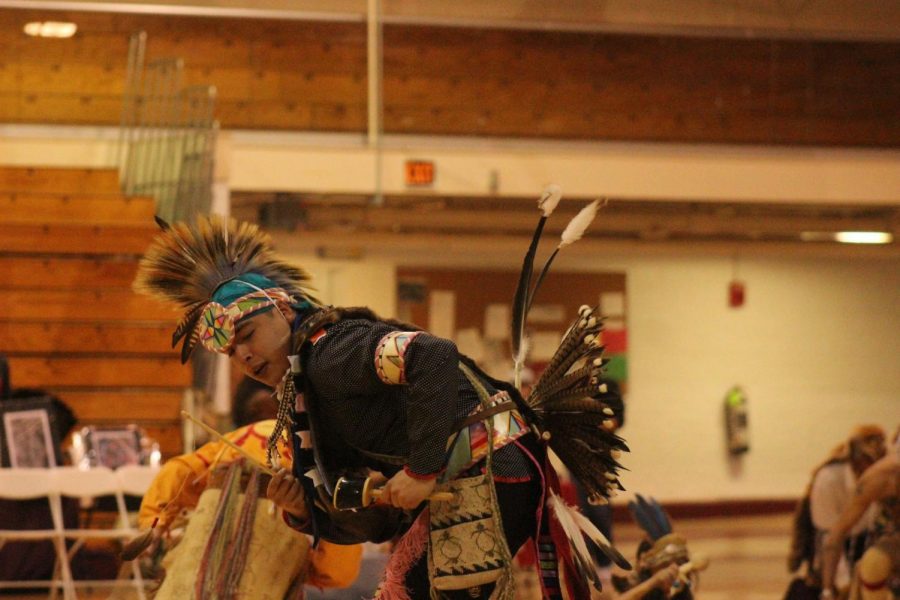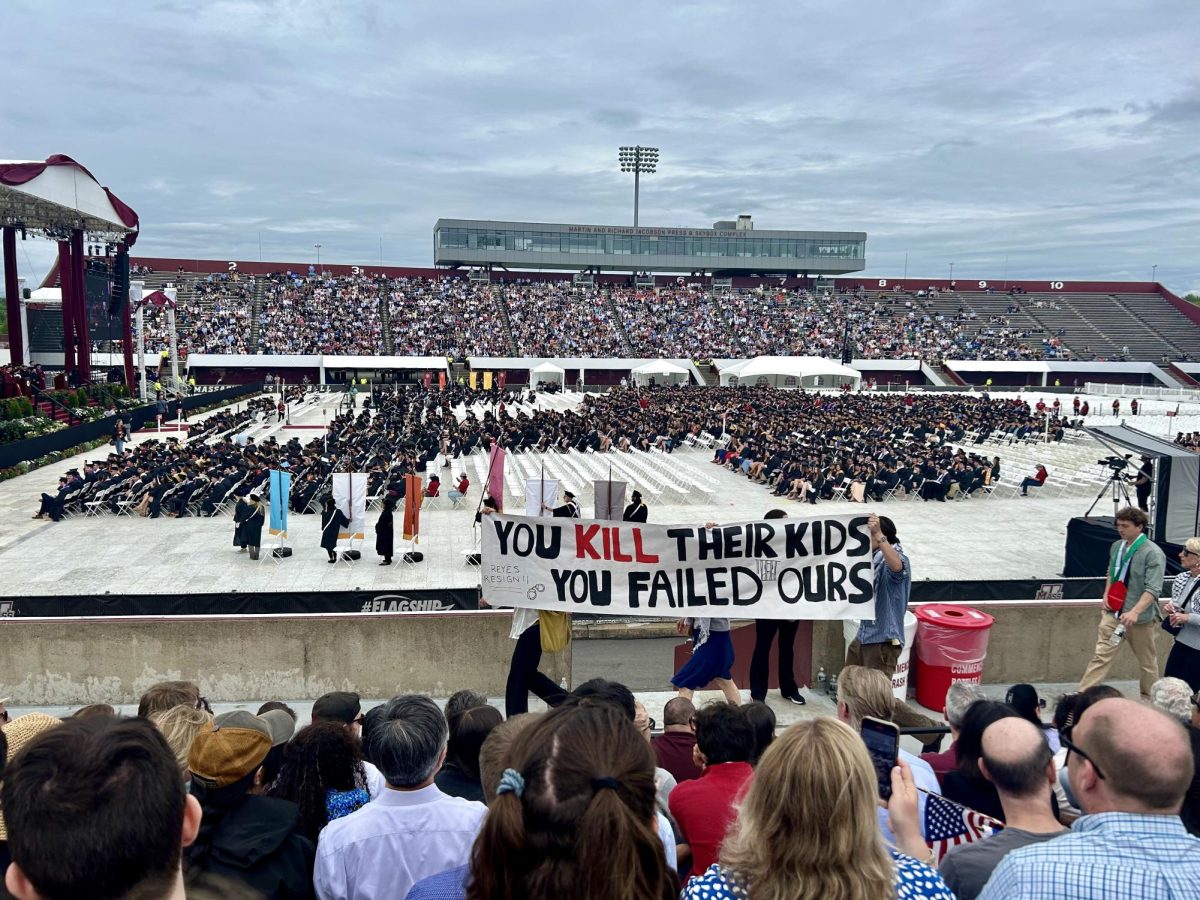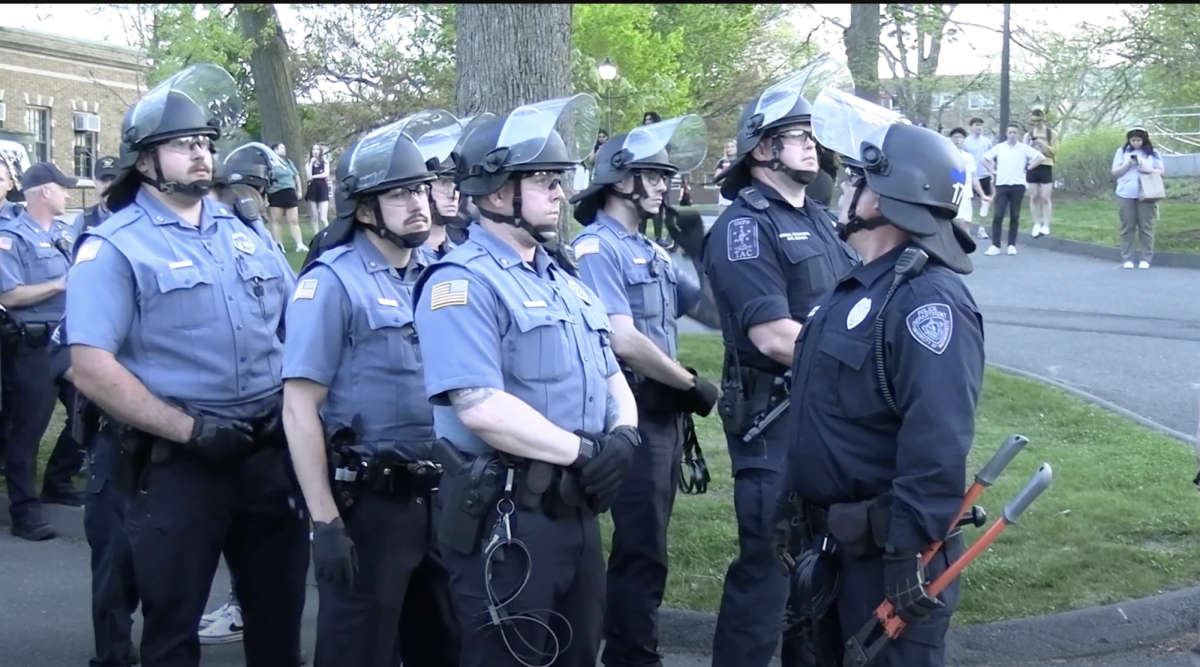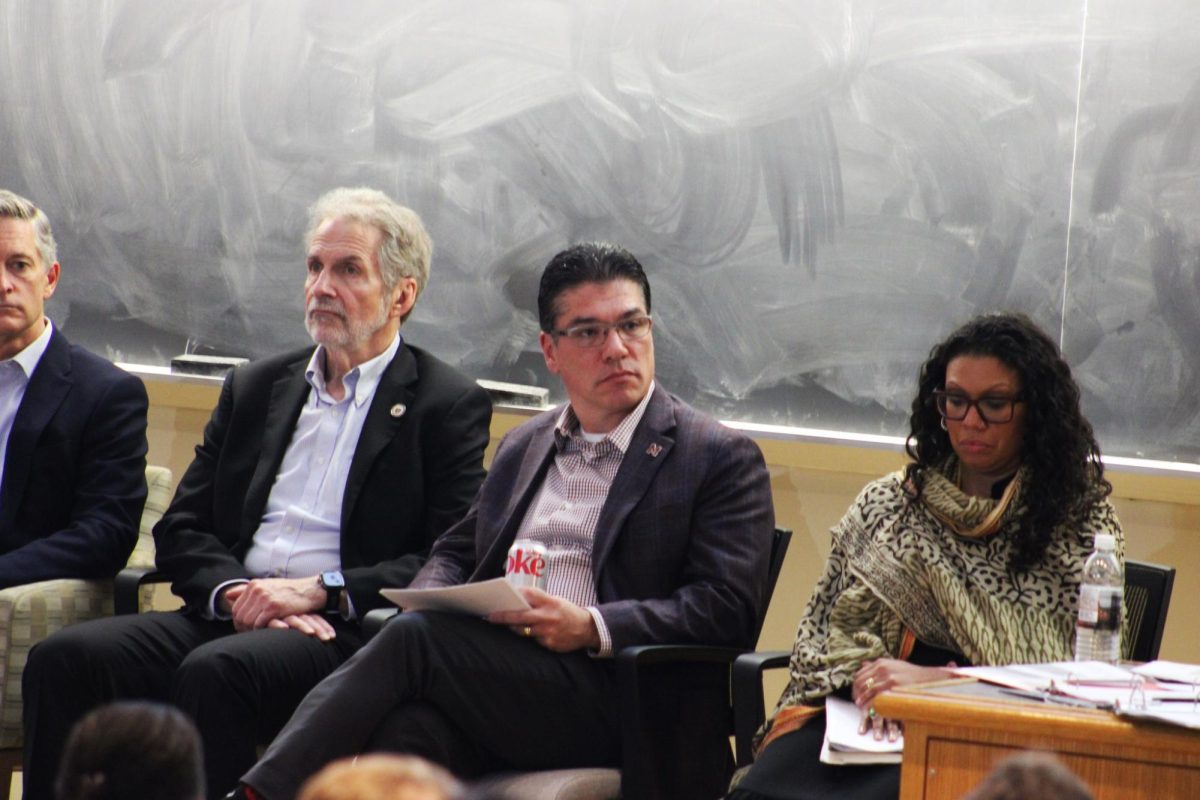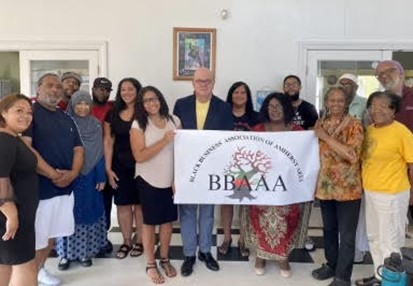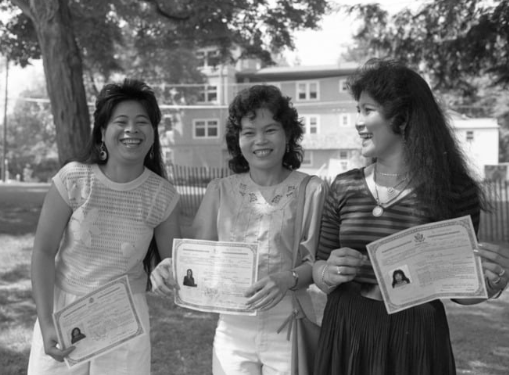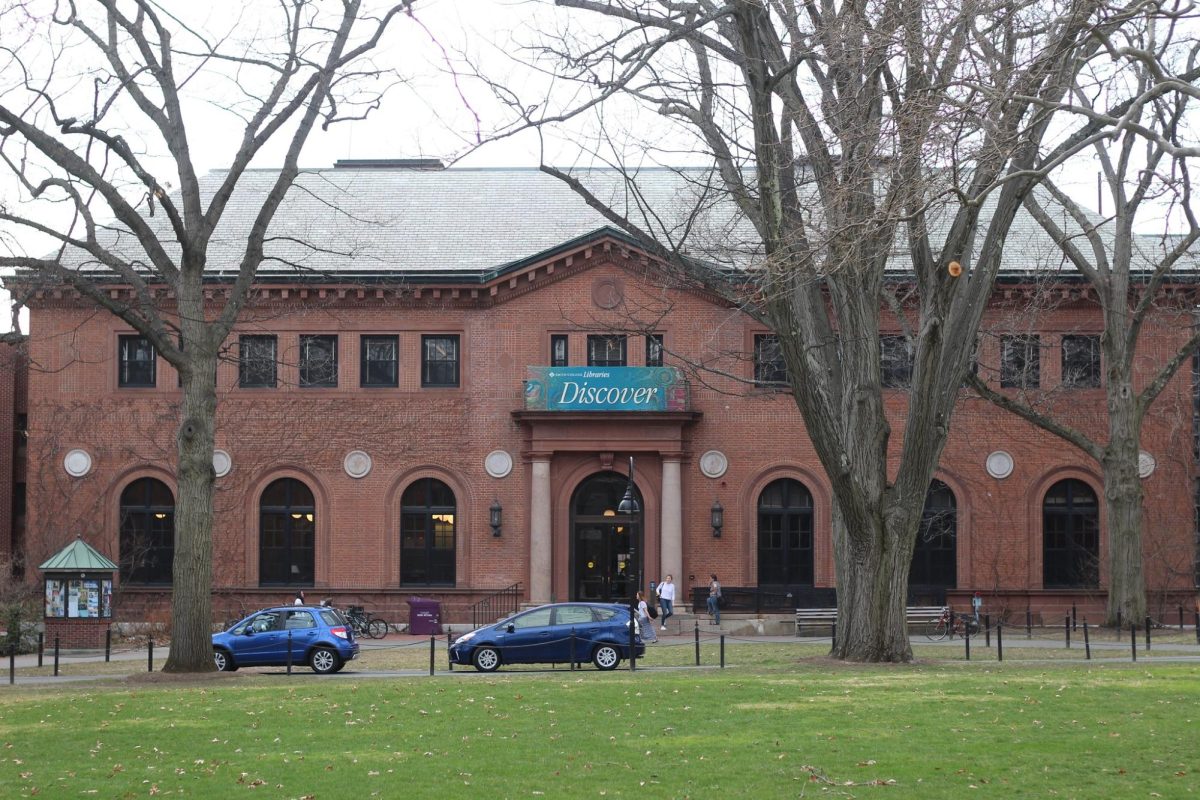The 37th Annual University of Massachusetts Powwow was held in the Curry Hicks Cage on April 14. Hundreds attended the event, which featured a variety of traditional dances and three different drum groups.
The Powwow was organized by the Native American Student Association at UMass; NASA treasurer and senior anthropology major Charlotte Mills described the Powwow as the “largest event for Native students and Native persons among the Five Colleges.”
Mills, who is Western Abenaki, said she has been involved in organizing the annual Powwow throughout her four years at the University. Preparation for this event began as early as October of 2017. This Powwow is the kickoff in a series of circuit Native American events spanning different universities throughout the summer.
“I think the Powwow is a great way of highlighting the community,” Mills said. “There is a stereotype about indigenous people that we live in the past and that we no longer exist. Whereas, the Powwow gives us the opportunity to say we are modern, we are in the present, we’re still here and we adapt to modern cultural trends.”
The Powwow started around 12 p.m. with the Grand Entry, led by flag-bearing armed service veterans and head dancers wearing traditional Native regalia through the central arena which was formed by a ring of chairs inside the Cage.
Once the flags were placed in their holders, there was an honoring dance for veterans present and an opening prayer.
Most of the Powwow featured inter-tribal dancing, which is not specific to one style and is shared throughout Native North American cultures. The music for the dancing was performed by host drum Iron River along with guest drums Eastern Suns from the Mashpee Wampanoag Tribe and Stoney Bears from Nova Scotia. (A “drum,” for reference, is a group of individuals who encircle the eponymous musical instrument and play it in a heartbeat-like rhythm while singing.)
Joyce Vincent, a retired social director for cultural enrichment at the Center for Multicultural Advancement and Student Success at UMass, who has been a part of the event since its initiation over three decades ago, said the roles of both intertribal dance and more structured dance exhibitions are important at the Powwow.
“We have stomp dances, which are our older, more traditional music and songs, and we want to make sure the young people don’t forget this part of their cultural heritage,” Vincent said. “The problem is that a lot of the time, there’s the intertribal dancing, which is fantastic, because it’s a way for us to learn about each other. But we have to also hold onto our own regional cultures as well.”
Vincent is of mixed ancestry, tracing her roots back to the Gullah, an African-American group, and the Aniyvwiya, also known as the Cherokee. Vincent explained the use of “Cherokee” was a misinterpretation by the English upon arrival in the Americas, but has stuck ever since.
She also said the wide variety of clothes and regalia at the Powwow signified the environmental influences of different regions on specific nations, adding that certain clothing styles could also be representative of specific time periods. Vincent mentioned in particular outfits, using cloth originated in the post-colonial era, as textile fabrics were not available before colonization.
Vincent also remarked on the common and incorrect reference to Native singing techniques as chanting.
“It’s not chanting,” Vincent said. “It’s just different sounds of vocables in indigenous languages, and for the people who aren’t used to hearing indigenous language, they don’t understand what they’re hearing, so they say, ‘Oh, they’re chanting.’”
Vincent was in charge of a stall along the perimeter of the Cage focusing on the issue of diabetes in the Native community and recent research on the subject.
“I’m so thankful that [leading diabetes researchers] finally decided that diabetes is not determined by race. So just because we’re Native, doesn’t mean you’re genetically prone to diabetes,” she said. “They finally recognized that [it has] a lot to do [with] your economic status and historical events that have happened to you.”
“When you’re colonized your diet gets changed. The way you live your life gets changed. We become more sedentary; that’s why we have more of a prevalence,” she added.
Among the other vendors in attendance lining stands at the Powwow was Jodi Malanson, whose booth held jewelry she created from materials, including antlers, teeth, porcupine quills, quartz and gemstones. Malanson and her husband try to maintain a wide selection of jewelry with different price-ranges for different buyers.
“We’re a Powwow booth, but we try to be a jewelry designer,” Malanson said. “The idea is to appeal to everybody and make everybody’s Powwow experience a good day.”
Malanson said she and her husband, who attend other Powwow events throughout the season, have been attending the UMass Powwow for five years.
“Last year, there was drastic growth,” Malanson said. “I think they’ve [gotten] more public and more dancers, and they’ve grown.”
Darrel Wixon, a Mashpee resident and a member of the Wampanoag tribe, has been to 32 UMass Powwows dating back to the days when, according to Wixon, the event was held on the fields by the Campus Pond.
“I’m 57, so I was 20 years old when I [first] came here,” Wixon said.
Wixon, a member of Eastern Suns, said that Wampanoags have inhabited the area around Mashpee for millennia. When European settlers arrived a mere four centuries ago, which Wixon referred to as a “blink of an eye” in the grand scheme of things, the previously free roaming indigenous people were restricted and hurt by European privatized land ownership, a custom not shared by Native Americans who viewed the land “like a mother,” who could not be owned.
“Now we have American society, so what I would say in this society, since we can’t change a lot of things, at least respect one another,” Wixon said. “Don’t have this racism, this prejudice against each other. People have been here now for 400 years, and they don’t seem to be going anywhere, so let’s work it out and respect the space that we have as Native peoples.”
Tasondra Jardine came to the Powwow as the community relations coordinator of the Native American Inter-Tribal Council of Western Massachusetts. The NAITCWMA is an organization that pursues support and education for the Native American population and the promotion and protection of Native heritages.
Jardine said the NAITCWMA holds an annual harvest festival at Springfield College, where leftover food is donated to Native communities and foodbanks. She also said they are working on holding Native musical activities in elder care facilities. This was the council’s first year tabling at the UMass Powwow.
“Up until recently, I don’t think [the council] reached out to some of the [student] groups,” Jardine said. “It brings a spotlight to you guys and also helps us.”
The council’s table was also selling crafts such as baby moccasins, medicine bags and necklaces made by Angel Nighthawk, who said he has been crafting since he was five years old. The UMass Powwow was the first one he has attended in three years.
“I haven’t really been active in five to six years,” Nighthawk said. “I kind of put my effort more into crafting and making things. I teach people in the group.”
Feyla McNamara, a UMass alumna who helped plan the Powwow as a member of NASA more than a decade ago, said the event was in a transitional phase when she was a student. She said the attendance was smaller when she was helping plan it, and that one year, it was not even held after funding was cut to the University’s Native programs. She said the UMass Powwow is now growing again.
“It’s beautiful this year,” McNamara said. “Anytime native people can get together and dance and sing and drum and be together is a beautiful thing, regardless of the size.”
Louangie Bou-Montes, also a UMass alumna, said she heard about the event last year from McNamara. After attending the 2017 UMass Powwow, she went to a couple others in the same year and wants to attend more in 2018.
“I definitely think I’ve learned a lot about these dances and what they represent, and about the clothing,” Bou-Montes said.
Stuart Foster can be reached at [email protected] followed on Twitter @Stuart_C_Foster. Chris McLaughlin can be reached at [email protected] followed on Twitter @ChrisMcLJournal.

